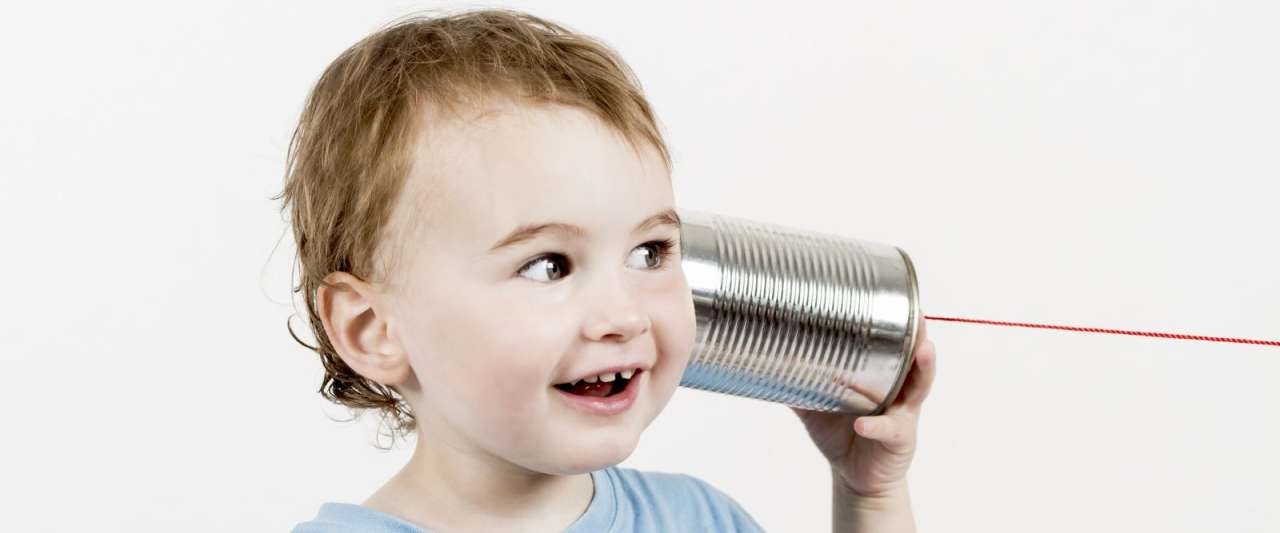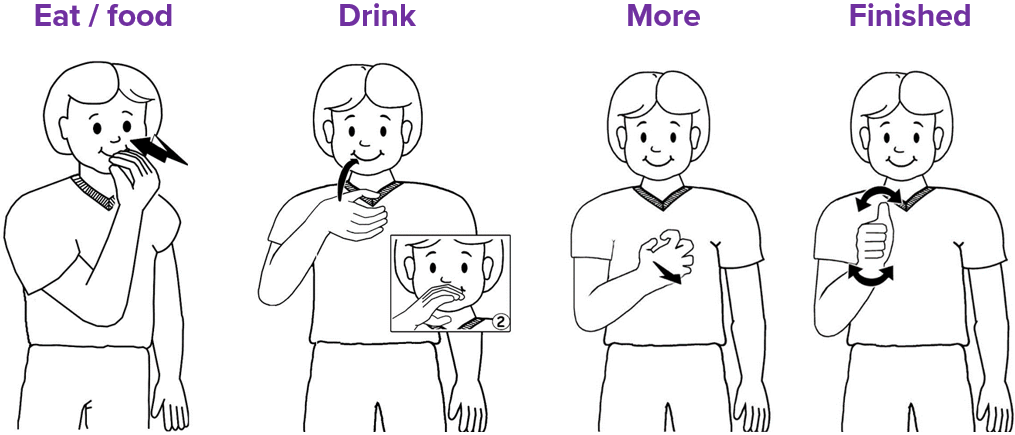Communication Skills and General Knowledge

Babies are born ready to communicate with you.
Arabic / عربى Dari / داري Hindi / ਪੰਜਾਬੀ Malay / Bahasa Melayu Swahili / Kiswahili
Welcome to our ‘Play Learn Grow’ Communication domain. Communication begins at birth and is very important to development and relationships for babies and children.
Children learn to talk when they hear language – so parents and carers need to talk to them a lot! Any time of the day is a good time to talk to babies and children. You can do this while changing their nappy, going for a walk, playing at home, hanging out the washing or preparing dinner. Talk about what you are doing, what you can see, what you can hear and ask them the same.
When children hear a lot of different words they are more likely to learn and better understand the world around them, and use different words themselves.
On this page we share with you some great information from the Raising Children website on what to expect in the early years with communication, and where you can find a range of fantastic children’s books in your community to help build their vocabulary.
Communication and talking: what to expect in the early years
Babies are born ready to communicate with you.
Newborn babies communicate by crying. This is how they let you know that they’re hungry, uncomfortable, in pain or need comfort. Sometimes babies cry for no obvious reason.
During the first three months, babies begin to use their voice and body to communicate. For example, they’ll smile, laugh, make cooing sounds, and move their arms and legs when they’re interested or excited.
From around three months, you’ll see and hear baby language starting to develop. This happens when you and your child make eye contact, interact and take turns, almost as if you’re having a conversation.
After about nine months of age, your child will let you know they’re interested in something by staring, pointing, touching and grabbing.
By about 12 months of age, your child will probably understand the names of things they see or use often, like ‘cup’, ‘doll’ or ‘toe’.
And as your toddler’s language develops between one and two years, you and your child might start to have simple conversations. For example, they might draw your attention to something and say, ‘That?’ (‘What’s that?’)
In language development at two to three years, children start to use words to ask for familiar things like food and toys. They also use words to comment on things that interest them. By about three years of age, children can ask and respond to basic questions and follow simple instructions. They might start to join sentences using words like ‘and’.
Source: Raising Children network
For more fun and creative ways to explore communication with your baby or child, download this ‘Using more words’ handout.
Book Swap Boxes
Unearth a treasure trove of delightful children's books nestled inside our Book Swap Boxes scattered across Greater Shepparton. These magical boxes are an enchanting way to extend your child's access to a diverse range of books, fostering their imagination and love for reading.
Each Book Swap Box is a little library filled to the brim with carefully chosen, pre-loved books that your little ones can explore. Whether they wish to indulge in a storytime adventure on-site, or continue their reading journey at home, these books are theirs to enjoy.
Embark on this literary quest and uncover our Book Swap Boxes at these locations across our vibrant community:
- North Hub
- Kialla Riverside Community Centre
- St Georges Rd Primary School
- Arthur Mawson Kindergarten
- Westmoreland Crescent Maternal Child Health Centre
- Mooroopna Children & Families Centre
- Tatura Community House
- Merrigum Maternal Child Health Centre
- Tallygaroopna Post Office
Our Book Swap Boxes are your passport to endless adventures, imaginative journeys and delightful tales. So, get ready to read, swap, and share the joy of storytelling today!
The Book Inn Shepparton
Searching for an exciting literary adventure for yourself, or an enchanting tale for your tiny tots? Discover the magic of pre-loved books at 'The Book Inn'!
Located at 94 Wyndham Street in the heart of Shepparton, 'The Book Inn' is a second-hand bookstore run by FamilyCare and their dedicated volunteers. Boasting a massive collection of quality books for readers of all ages, the prices are as friendly as the volunteers, ranging from just 50c to $2.00.
You're welcome to visit The Book Inn from Monday to Thursday, 10am to 4pm, and Fridays from 10am to 1pm. For more details, give Andrea Tuohey at FamilyCare a call on 5823 7000.
Active listening
Active listening is key to good communication and shows your child that you care and are interested in what they are saying.
- Get down to your child’s level so you are face to face at a similar eye level to them. Look at your child when they are talking to you.
- Watch your child’s facial expressions and body language. Listening isn’t just about hearing words. It’s also about trying to understand what’s behind those words.
- Think about your own expression and body language. You might want to smile or nod your head as your child is talking (non-verbal cues) to let them know you are hearing what they are saying.
- Encourage your child to build on what they are telling you by saying things like ‘Wow, tell me more about…’ or ‘Then what happened?’.
- Allow your child time to finish what they are trying to tell you. Sometimes it is hard for children to find the words. Avoid interrupting or finishing sentences for them. Don’t rush the conversation.
- Trying to understand how your child is feeling is part of active listening. You might want to say ‘It sounds like you felt sad when that happened’ or ‘It sounds like you were really excited when that happened’.
‘OWL’ strategy
OWL (Observe, Wait, Listen) is strategy from the Hanen Centre and is a way to let your child lead the interaction. It is amazing how often we as parents try to finish our child’s sentence, or try to fill the ‘silence’ during an interaction when really, we need to give our children time to process and respond.
Give this strategy a go today and continue to practice it regularly during interactions with your child.
- OBSERVE - Take time to notice what your child is interested in – Where are they looking? What are they doing? What sounds or words are they saying? Be face-to-face when you can. Take the time to observe your child’s body language — actions, gestures and facial expressions.
- WAIT – Waiting is a powerful tool. It gives your child a chance to start an interaction or respond to something you have said. Stop talking, lean forward, look at your child expectantly to show you are waiting for them to send a message.
- LISTEN - Listening means paying close attention to all of your child’s words and sounds. Take care not to interrupt them, even if you’ve already figured out what they are telling you.
Key Word Sign
Before children learn to talk, they will use gestures like pointing, waving and clapping hands as a way to communicate.
Key Word Sign builds on these skills to provide a way to communicate while words are developing.
Using sign or gesture does not hinder language development and can motivate use of communication. It can also help reduce your child’s frustration when they are unable to communicate their message verbally through words.
Always use the signs with speech. You say a whole sentence but just sign the key word. “Do you want a drink?” You would use the drink sign but say the whole sentence.
There are some really simple key word signs you can use with your child to assist with communication. Just like children need to hear language and words lots of times before they start to use them, it may take many repetitions for your child to understand and use these signs.
Here are a few you can start using with your child:

Quick facts
- Communication with children and babies is important to their relationships and development.
- Babies cry to communicate and let you know they need something – a cuddle, they are hungry, they are tired. Crying is the only way your baby knows how to communicate.
- You can help children develop conversation skills by talking and listening with them every day. Activities like cooking, folding up the washing, changing a nappy, playing in the backyard, travelling in the car or going grocery shopping are all great times to be talking with your child about what is happening or what you are doing.
- Asking questions about things you can see, smell or hear is a great way to get your child talking and thinking about different things. Given them time to respond and show that you are listening.
- Meal times are a great time to talk and listen to each other – talk about your day, something good or funny that happened, etc.
- Babies and children need to hear language to learn language – sing songs, play games, participate in pretend play, name items
- Put your phone or device away and focus on talking and listening with your child!
- Head to your local library and have access to hundreds of books and games for your children to enjoy. Don’t forget to check out the rhyme and story time sessions offered by your local library.
- Here are some helpful tips on communicating with your child.
Activity sheets
- See below for links to some fun activity sheets for families.

